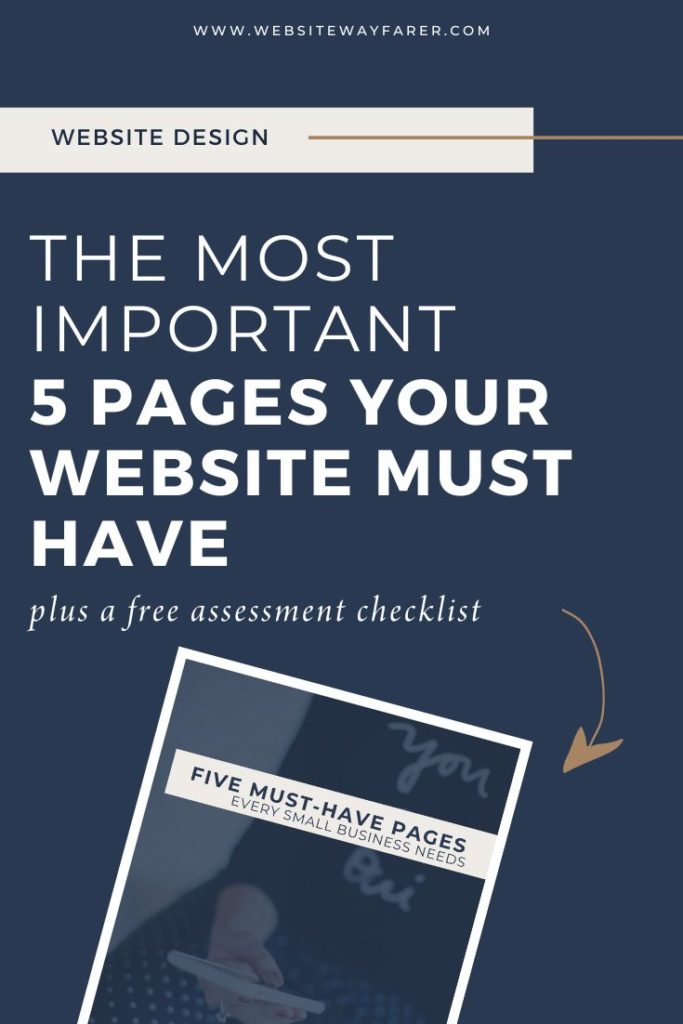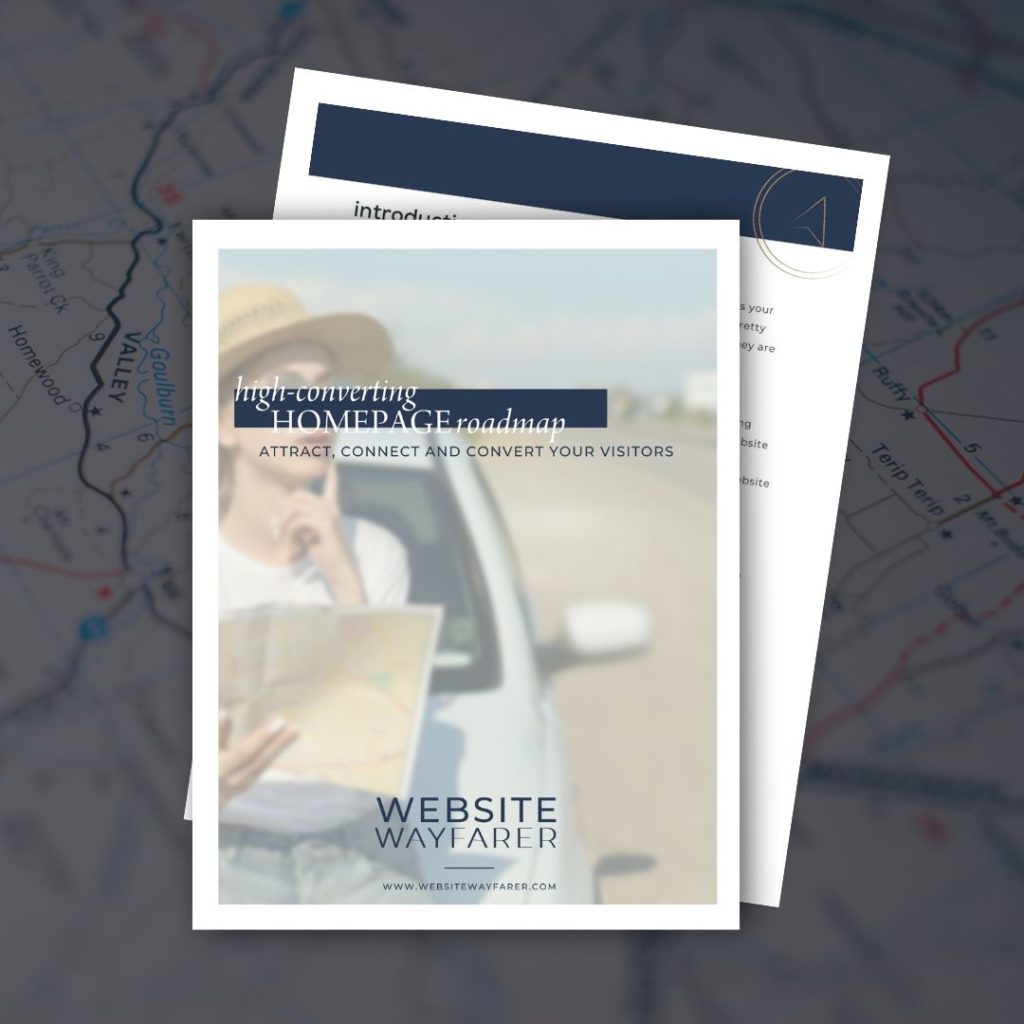If you want your business to come across as impressive to your prospective customers, your website needs to be professional. A professional website ultimately leads to higher conversion rates and an increase in your bottom line. And while there are numerous pages a business can include on their website, there are five must-have pages every website should include in order to engage and convert.
Knowing which pages to display prominently on your website is necessary to provide a quality user experience and below we’ll detail what those pages are and which types of content to include to have the best opportunity for conversion.

Your website is primarily a selling tool for your business, so you should create pages that sell your business and the services or products you provide.
Here are the five must-have pages every website should have:
01. HOMEPAGE
Your website homepage is the virtual front door to your business and often the first page visitors land on when they first visit your website. Since users typically spend less than seven seconds deciding whether to stay on your site or navigate elsewhere, it’s important to keep the layout clean, simple to navigate and ensure the content is short and easy to digest.
Your homepage sets the overall tone for the remainder of your site, so take some time to thoughtfully plan the written and visual content (our High-Converting Homepage Roadmap is a great place to start!). A good rule of thumb at a minimum is to include your main tagline or sales message, sometimes called a Value Proposition, some featured content (blog posts, services or products), and a main call-to-action.
Use headlines, sub-headlines and eye-catching images to break up the copy and provide your most important information front and center. Pique the visitor’s curiosity just enough so that they want to learn more about your business and navigate further into your site instead of overwhelming them with too much information.
GOAL: You want your homepage content to attract and direct your customers to take a desired action. What is that action?
Make sure your homepage answers these key questions:
- Who You Are
- Who You Help (Your Value Proposition)
- What You Can Do For Them
- Where they should go next (navigation or calls-to-action)
02. ABOUT PAGE
Did you know the About Page is one of the most visited pages on most websites? And for good reason, people want to know more about you and your business to see if they want to work with you.
 However, keep in mind customers/clients care far more about what you can do for THEM than they care all ABOUT you. Visitors come to your About page, not for a long list of your accomplishments, but to learn how you can help them as a result of your depth of expertise or experience. So position your content in a way that tells your story, showing you’re the expert, while also establishing credibility and trust.
However, keep in mind customers/clients care far more about what you can do for THEM than they care all ABOUT you. Visitors come to your About page, not for a long list of your accomplishments, but to learn how you can help them as a result of your depth of expertise or experience. So position your content in a way that tells your story, showing you’re the expert, while also establishing credibility and trust.
What makes you unique from your competition and why should a potential customer choose you?
GOAL: Use this page to convince your customers that you understand their needs and to establish credibility and trust.
03. SERVICES OR SALES PAGE
Your homepage introduces your services, but your services page SELLS them. So start selling! Clearly describe your services in a compelling way that outlines what benefits customers will get. Answer any questions potential customers may have, either through an FAQ section or throughout your written content.
And don’t forget to direct them where or how to purchase with calls-to-action.
GOAL: Make sure your services page communicates what your services are, what benefits a customer will get from them and direct them on how to purchase the service.
Get started with the free download “5 Pages Every Website Must Have”
04. CONTACT PAGE
A contact page may seem basic and straightforward but that doesn’t make it any less important to your website visitors. The contact page should be more than a simple form slapped on the page with your email address.
If you have a physical location, list your address as well as a phone number and email address where someone can be reached. Also include your business hours. Even if you are a freelance entrepreneur it’s important to establish your working hours clearly on your site.
And don’t forget to be direct about your response time. If you respond to form inquiries within 48 hours of receipt, state that clearly. Set expectations at first contact with a potential customer and your client communications will go a lot more smoothly.
GOAL: Think about the information you would like to capture from users, as well as the user journey upon successful submission. What responses will a user receive? Is there automation that occurs after their first contact via email or contact form?
05. BLOG
So many businesses ignore the importance of a blog however a blog can be a primary traffic driver to your site, legitimize your knowledge and value, and establish reputation and credibility for your business. More importantly, if SEO is important to your business (and it should be), search engines give preference to websites with regularly updated content that’s relevant to their industry.
Since primary website pages tend to be fairly static, a blog is the perfect route to engage with potential customers and provide ongoing, relevant content that responds to questions and further informs. Even blogging at least twice a month can be more beneficial than not blogging at all. And twice a month sounds pretty doable, right?
GOAL: Create a content calendar and write blog posts relevant to your area of expertise. Target your customers’ common problems and help them solve them.
Begin your website plan with these pages and make sure your design, content, and calls-to-action are seamless before moving on to any secondary pages. Each of your primary website pages should have a clear purpose.
What do you want a user to do when they come to your site? What action do you want them to take next? How will you navigate them throughout your site? These are all vital questions to address as you think through your website strategy.
With each of your website pages, ask the following questions:
- What is the purpose of the page and how does it contribute to my business?
- What do I want the user to do next after consuming the page content?
- How does the content on this page relate back to the user?




